Bergen-Belsen
In preparation for war, the German armed forces (Wehrmacht) established in the mid-thirties a number of military bases. The largest of these was called Troop practice Bergen and covered an area of 280 square kilometers. Here it was thought that motorized units would be trained. The troops would in turn be placed in two barracks, one at Fallingbostel at the western end of the base and one at Belsen at the eastern end, together they would have a capacity of about 30,000 men. In connection with Fallingbostel and Belsen, barracks were also built for the workers who would build the barracks. In Belsen, about 30 barracks were built, which became housing for about 3,000 workers. When the military base was completed around the turn of the year 38/39, the labor barracks were abandoned in both Fallingbostel and Belsen, some were demolished while others were used as storage.
Both Belsen and Fallingbostel were in an area that included about 200 prisoner-of-war camps. The labour barracks in Fallingbostel were transformed shortly before the outbreak of war into a prisoner-of-war camp, Stalag XI B. A camp that over time became one of the largest prisoner of war camps, at most about 95,000 prisoners were imprisoned in the camp at the same time. The Germans created labor commands for the prisoners and used them as slave labor. In June 1940, about 600 French and Belgian prisoners of war formed such a working command, which was named 601. The command was placed in the abandoned labor barracks of Belsen. In connection with the preparations for the German attack on the Soviet Union Belsen expanded and became an independent prisoner-of-war camp, Stalag 311, with a capacity of about 20,000 prisoners of war. Two more camps for Soviet prisoners of war were established, Wietzendorf (Stalag 310) north of Beslen and Oerbke (Stalag 321) east of Belsen.
In July 1941, the first 2,000 Soviet prisoners of war arrived in Belsen (Stalag 311). The camp was far from complete and the prisoners were therefore forced by the means available, usually with their bare hands, to dig earth holes as protection from the weather. In August 1941, the Gestapo sent about 500 prisoners of war to Sachsenhausen where they were murdered because they were suspected of being jews or political functionaries. In november 1941 there were about 20 000 prisoners in the camp and in march 1942 about 14 000 of them had died. In all, in the three camps in March 1942 about 41,000 Soviet prisoners of war had died (typhus and dysentery). In total, about 50,000 Soviet prisoners of war died in these three prisoner-of-war camps.
In the summer of 1943, Stalag 311 was discontinued and became part of Stalag XI B – Fallingbostel. The camp in Belsen became a camp hospital for sick Soviet prisoners of war in the region. At the end of July 1944, a section was established for Italian prisoners of war from Oerbke who had become ill with tuberculosis. In october 1944 a special section within the camp was established for about 1000 poles (half women) from the polish home army. These had been captured in connection with the defeat in the Warsaw uprising. In January 1945, Wehrmacht dismantled the camp hospital and handed it over to the SS, the prisoners were moved to other camps. About 20,000 prisoners of war died in the prisoner-of-war camp between 1940 and 1945.
In April 1943, part of the prisoner-of-war camp was transferred to the SS. The purpose was for the SS to use it as an exchange camp for Jews that SS wanted to use in bartering against Germans who were imprisoned abroad, for money or for material. Officially it was an Aufenthaltslager and the first commandant of the camp was Hauptsturmführer Adolf Hass. The camp was built by prisoners from Natzweiler, Buchenwald and Niederhagen and consisted of four sections, Sonderlager, Neutralenlager, Sternlager and Ungarnlager. Sonderlager was established in July 1943 and there were between 2300 – 2500 jews from Poland. Each person had a passport, entry visa or other documents proving that they were under the protection of a state not occupied by the Germans. They did not have to do slave labor.
In October 1943, about 1,800 Jews were sent to Auschwitz where they were murdered, presumably because their documents proved to be false. Neutralenlager was established in august 1943 and there were hundreds of jews from neutral states (mostly spanish). These were so-called sephards, Jews of arabic/spanish descent, who had been arrested by the germans in Greece. The conditions in this section were perhaps better than in any other part of Belsen. Better food, better sanitary facilities and prisoners did not have to perform slave labor. In 1944, 365 Jews were handed over to spanish authorities.
Sternlager was established in September 1943 and there were about 4000 Jews, most of whom had been sent to Belsen via the transit camp Westerbork in Holland. The SS intended to use these Jews as trade against Germans who were imprisoned abroad. They were allowed to keep their civilian clothes but had to wear the star of David and perform slave labor. In 1944, 222 Jews were released to Palestine in exchange for those imprisoned on British territory. In July 1944, the SS set up Hungary warehouses (Ungarnlager) where about 1,600 Jews from Hungary were imprisoned. The SS intended to use these in barter for either money or materials. They were allowed to keep their civilian clothes, had to wear the star of David but were did not have to do slave labor. Between august and december 1944, about 1600 Jews were granted an exit to Switzerland in exchange for money.
As more and more concentration camp prisoners were used as slave workers, more and more of these became ill. Therefore, in March 1944 a Erholungslager (recovery camp) for sick male prisoners from other camps was established within the camp. The idea was that when they had recovered, they would return to the camp where they had come from. But because of famine, diseases, lack of medicine and care, thousands died in the camp. In August 1944, a tent camp for female prisoners intended to be sent to labour camps via Belsen was established. The majority of these came from Auschwitz, among others, Anne Frank and her sister Margot came to Belsen in October 1944. In november the tent camp was destroyed by a storm, the prisoners were then moved to a section of the camp with barracks (Kleines Frauenlager). Between August and November, about 9000 women were sent to Belsen.
In December 1944, Belsen became an official Concentration camp and a new disastrous phase begins in the history of the camp. A phase that has given the camp its reputation and has become a symbol of the atrocities of Nazism. The camp became a reception camp for prisoners evacuated from other camps threatened by enemy armies. Transport with thousands of sick and exhausted prisoners arrived in Belsen in greater numbers than the camp could receive. All under the supervision of the new commandant Josef Kramer, former commander of Birkenau. To cope with the influx of prisoners, a new major women’s camp (Grosses Frauenlager) was established in the former prisoner of war camp. But this is far from enough, the barracks quickly became overcrowded and the prisoners were forced to live outdoors. The total lack of food, medicine, sanitary facilities and shelter led to a mass death. There was total chaos in the camp and dead bodies were scattered all over the camp area. In March 1945 alone, approximately 18,000 prisoners were estimated to have died, including Anne and Margot Frank. Between December 1944 and April 1945, about 100 transports arrived in Belsen with a total of about 85,000 prisoners. In early April 1945, the SS began evacuating prisoners to other camps.
On April 15, 1945, British troops liberated Bergen – Belsen without fight. At that time, there were between 50 – 60 000 prisoners in the camp, of whom about 13 000 were dead and scattered throughout the camp. The British knew that there was a typhus epidemic in the camp, but were still not prepared for what met them. A first step was to provide the prisoners with help on the spot. The next step was to defuse them and gradually send them to the Wehrmacht barracks for further care. The prisoners who were dead in the camp were buried in large mass graves. The British also understood that what they witnessed was something unique and therefore decided to document the liberation by both filming and photographing the camp. Films and photographs that have contributed greatly to the reputation of the camp. About a month after the liberation, the English decided to burn down the barracks because they were full of lice. For many prisoners, the relief/assistance came too late and in June another 14,000 prisoners had died. In total, about 52,000 prisoners died in Belsen, of which about 35,000 died in the last six months.
About 480 commanders and guards (45 women) had served in Belsen but only a few were brought to justice. The first (and largest) trial of these took place already in the autumn of 1945 when 45 former commanders and guards were brought to justice in Lüneburg. At this trial, twelve death sentences were issued. Among them the commandant Joseph Kramer.
Current status: Demolished with museum (2013).
Address: Anne-Frank-Platz, 29303 Lohheide.
Get there: Car.
Follow up in books: Shephard, Ben: After Daybreak: The Liberation of Belsen, 1945 (2005).
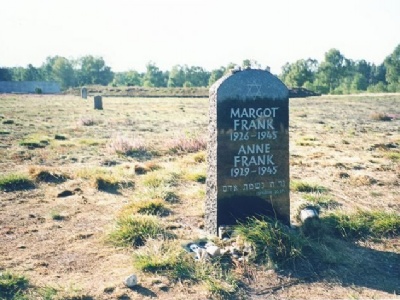

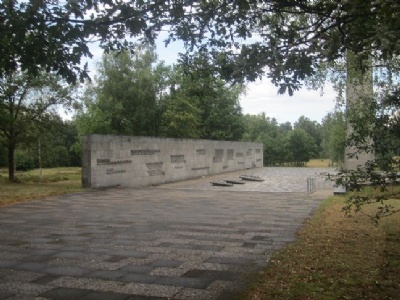
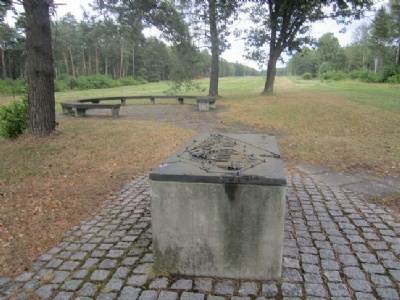
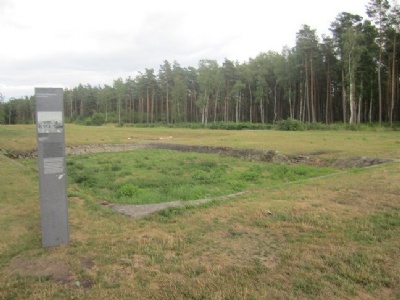
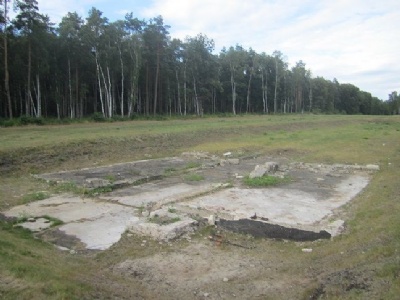

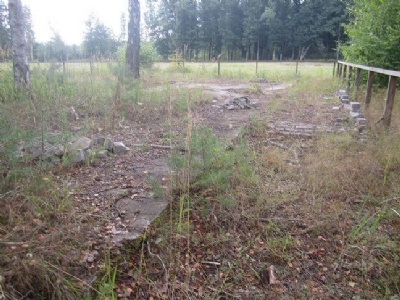



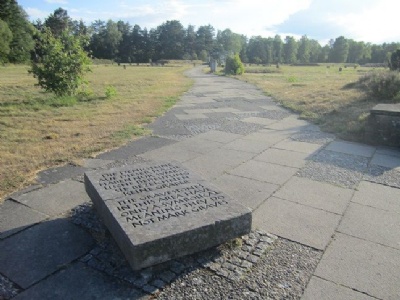
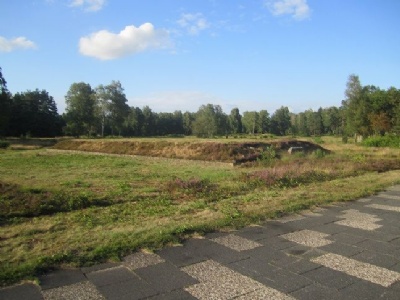
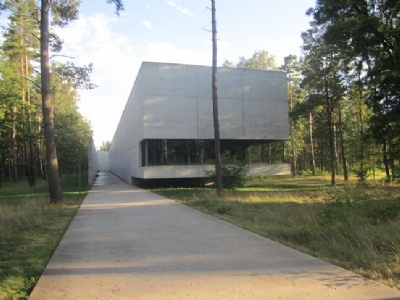
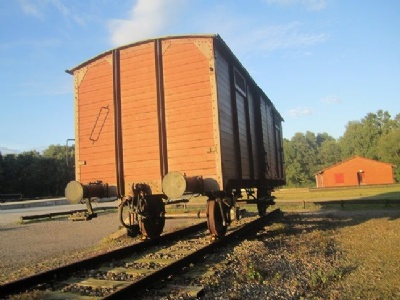
Alongside Auschwitz, Bergen-Belsen is perhaps the most famous Nazi camp and the reasons are several. The connection of the camp to Auschwitz is clear because thousands of prisoners who were in Auschwitz were sent to Bergen – Belsen, where a large part of them also died. Anne Frank and her sister were deported from Auschwitz to Bergen – Belsen in October 1944. The only thing known about their stay in Bergen – Belsen is that they fell ill with typhus and died in March 1945. Another reason is that the English took pictures after the liberation. But the main reason for the fame of the camp is probably due to the film sequences filmed by the English. The films show not only emaciated corpses, sick prisoners, former SS guards (both male and female) forced to bury their victims but also caterpillars that figuratively plow piles of corpses into large mass graves. In particular, the latter has etched itself into the collective memory of western Europe and has contributed greatly to the reputation of the camp to a greater extent than other camps.
Although the camp was burned down, there are several foundations after barracks and other installations left and the information signs that are on the former camp area make it easy to orient yourself. Among the mass graves there are also several individual gravestones, these are symbolic because the people behind the names were buried in one of the mass graves. Siblings Frank have a common grave. In Sweden you can sometimes, or at least in the seventies/eighties, hear and read the expression ”Belsen prisoner”, which means that a person is so incredibly slim/skinny that they look just like a prisoner from Belsen. This expression derives from the photographs and film sequences mentioned above and was perhaps more common in the past than it was in 2013, but in any case, it has certainly helped to preserve the collective memory of Belsen.